- Kew scientists pick their highlights from 74 plants and 15 fungi named with partners in 2023
- Spotlight on rare and threatened species that require immediate protection
- Highlights include three new species of Antarctic fungi, an orchid found at a volcano and a palm that grows underground
Scientists from the Royal Botanic Gardens, Kew together with international partners present their annual pick of the top 10 plants and fungi described as new to science in 2023.
From threatened plants that owe their survival to a protected species of bird, to truly bizarre palms that fruit and flower almost exclusively underground, the list published by RBG Kew is an important reminder of the beauty and wonder of the natural world – but also a stark warning that biodiversity loss and climate change are threatening to disrupt that beauty as well as the many vital roles they play in supporting ecosystems.
Approximately 74 plants and 15 fungi were named by RBG Kew scientists and partners in 2023, with species coming in from virtually every corner of the globe. These include the rocky outcrops of Antarctica, the unique ecosystems of Madagascar, and the Korean Peninsula. Unfortunately, many of these species are already considered threatened with extinction due to habitat clearance.
Together with their partners, RBG Kew scientists seek to protect these species where possible by incorporating them into a network of Important Plant Areas (IPAs) across the globe and by conserving their seeds through the Millennium Seed Bank Partnership at Wakehurst, Kew’s wild botanic garden in the heart of Sussex. And yet, despite these efforts, it is almost certain at least one of these species was already globally extinct by the time it was formally described.
According to recent findings published in Kew’s State of the World’s Plants and Fungi 2023 report, as many as 3 in 4 of the world’s undescribed plant species are already threatened with extinction. By heading out into the field to collect, study, and describe previously unknown species, scientists hope to inform better conservation policies. In other words, in order to protect them, they first need to know what they’re protecting.
Dr Martin Cheek, Senior Research Leader in RBG Kew’s Africa Team, says: “It is imperative now, more so than ever, that we do everything in our power to go out into the field with our partners and work out which species of plants and fungi we haven't given a scientific description yet. Without doing so, we risk losing these species without ever even knowing they existed.
“That is not to say the outlook is completely bleak. It is an incredibly exciting time to be a scientist but even as we make these wonderful new discoveries, we must remember that nature is under threat, and we have the power to do something about it.”
On average, scientists name about 2,500 new species of plants and 2,500 new species of fungi every year and it is estimated there are as many as 100,000 plants yet to be formally identified. For fungi, this figure is much higher with estimates suggesting we have only scratched the surface – about 150,000 species described out of an estimated 2.5 million. Among these discoveries-in-waiting, scientists hope to find new sources of food, medicine, and nature-based solutions to the biggest challenges of our times.
Dr Raquel Pino-Bodas, Honorary Research Associate in Comparative Fungal Biology at RBG Kew, says: “Although fungi are one of the three major groups of eukaryotes, along with plants and animals, most fungal diversity remains undiscovered. Only five to ten percent of all existing species are known. Undescribed fungal species are not only found in remote, unexplored areas, they can be found in every environment on the planet.
“It is absolutely critical that we pick up the gauntlet. Among this incredible diversity of fungal species, we are bound to discover new sources of food, medicines and other useful active compounds that can help us find nature-based solutions to some of the biggest challenges we face today.”
Here are the top 10 weird and wonderful species named new to science in 2023:
1. Feeling under the feather, new orchid species saved by rare bird
The newly described species of orchid Aeranthes bigibbum is the perfect example of how implementing protective measure for one species can help save another facing certain destruction. Discovered on the island of Madagascar, A. bigibbum was found by Kew botanist Johan Hermans during a years-long exploration of the country’s orchids in partnership with Malagasy botanists.
What is unusual is that the plant hails from a small reserve managed by a group of villagers tasked with protecting a very rare Helmet vanga (Euryceros prevostii). With its distinct blue beak, visitors paying to see the bird bring a small amount of income to the village, which incentivizes the protection of their forests. Without the rare bird’s presence, it is believed the forest would have been cleared and the orchid with it.
Within the genus Aeranthes, there are an estimated 45 species, of which 40 are found almost exclusively on Madagascar. These are mainly forest epiphytes that grow on other plants, with pale and translucent flowers on long, wiry inflorescence axes.


2. Two for the price of one: A pair of underground trees discovered in Angola
Although it may seem odd at first, many species of plants have evolved to thrive underground. This is true of the deep, free-draining Kalahari sands of highland Angola in central Africa, where tree species from several families have evolved to be 90 per cent or more underground.
In this particular case, two new species of underground trees were discovered by Kew’s Dr David Goyder, during a National Geographic Expeditions survey of Angola’s remote areas. One of these species, Baphia arenicola or ‘growing on sand’, belongs to the bean family and sports white flowers. The second species, Cochlospermum adjanyae or ‘Adjany’s Cochlospermum’, features characteristic yellow flowers. This species was named after Adjany Costa, an Angolan colleague and winner of the 2019 UN Young Champions of the Earth Africa prize. A paper published following this survey has formally described another two new species.
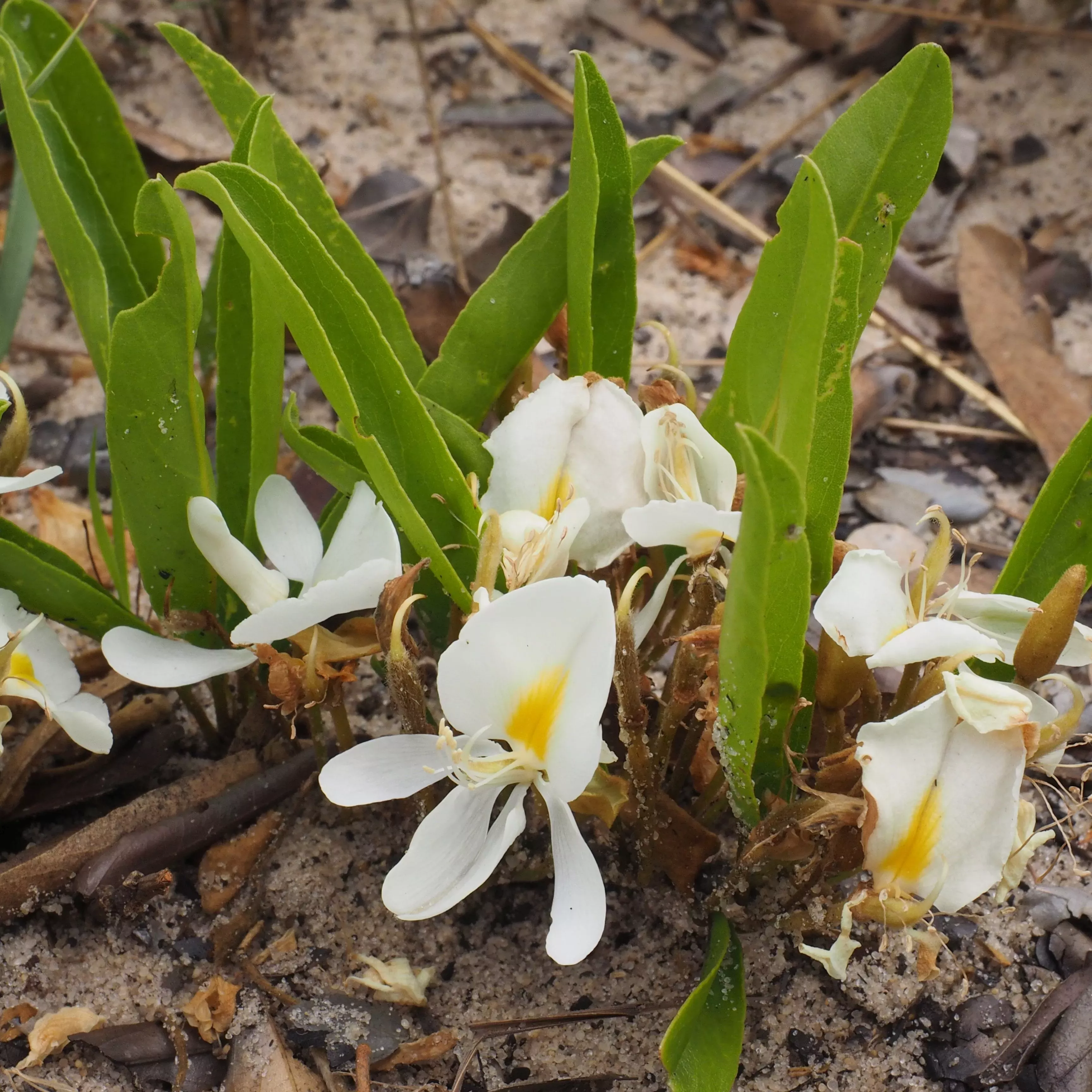

3. Not so fun-gi: New species from an invasive pathogen genus found in South Korea
The fungal genus Lichtheimia is known to contain at least six species of fungi, all of which occur across the globe and can be found at high temperatures. The fungi have been found in compost heaps, soil, food products, invertebrates, and even faeces, and the genus sits in the order Mucorales, which includes bread mould.
At least three species of Lichtheimia are known to be human pathogens, meaning they can cause disease in humans, such as invasive mucormycosis in the lungs or in skin wounds. Described by Kew mycologist Dr Paul Kirk, the new species Lichtheimia koreana was first isolated from soy waste in South Korea’s Kunryang-ri, Cheongyang, and Chungnam Provinces in 2020 and 2023. Thankfully, it is not closely related to the three pathogenic species, and so scientists believe its pathogenic potential is limited.

4. Hot find: Explosive orchid discovery atop a dormant Indonesian volcano
When a team of scientists visited the Indonesian island of Waigeo in 2020, they did so in hopes of rediscovering a long-lost species of blue orchid, Dendrobium azureum, which hadn’t been seen in 80 years. Not only did their mission prove to be a success – with the plant found on the summit of Mount Nok, an extinct volcano – they came across other, previously unknown orchid species.
One of these discoveries is Dendrobium lancilabium subspecies wuryae, an orchid with spectacular, bright red flowers named after Mrs Wury, the wife of Indonesia’s vice-president, Ma’ruf Amin. It is the ninth new orchid (sub)species from Indo China and Southeast Asia to be described since December 2022 by Kew orchidologist Dr André Schuiteman together with local partners.

5. Hidden in plain sight, this unusual underground palm was known to locals
When a Malaysian scientist tipped off his Kew colleagues about the existence of a very unusual palm on the island of Borneo in South East Asia, little did they know they were about to stumble upon a first of its kind – a species of palm that fruits and flowers almost exclusively underground. Officially named Pinanga subterranea, it is the first and only known member of the palm family (Arecaceae) to exhibit both geoflory and geocarpy, which so far has only ever been observed in one other plant group, an orchid called Rhizanthella.
And yet, despite the plant managing to avoid the scrutiny of scientists up until recently, thanks in no small part to its small and unassuming stature, the plant and its bright red fruit were already known to some local communities. In fact, the plant has multiple names in Bornean languages: Pinang Tanah, Pinang Pipit, Muring Pelandok, and Tudong Pelandok.
Kew scientists Dr William Baker and Dr Benedikt Kuhnhäuser believe P. subterranea is proof that nature still has many surprises up its sleeve but also that indigenous knowledge is a valuable tool for the accelerated discovery of species.

6. Ice and easy does it: Three new fungi found on the continent of Antarctica
Although the icy, barren landscape of Antarctica is virtually devoid of flowering plants, it is home to many lichens. Lichens are fascinating organisms formed by a partnership between a fungus and algae and/or cyanobacteria (or both). However, Antarctic lichens cannot grow on ice and only two per cent of the continent is exposed as bare rock known as nunataks.
On these nunataks, more than 400 species of lichen grow, though very little is still known about the additional fungi that grow on them (lichenicolous fungi), of which only about 100 species have been reported. Now, a study of Antarctic lichens collected in February 2018 near the Spanish Antarctic base has so far revealed three new species of lichenicolous fungi: Arthonia olechiana, Sphaeropezia neuropogonis, and Sphinctrina sessilis. The species were described by a team including Kew’s mycologist Raquel Pino-Bodas with her unique morphological, anatomical and molecular expertise.

7. A discovery to light up your day: Nine new species of Australian tobacco in a national park
The tobacco genus Nicotiana is scattered all over the globe, but more than half of its known 90 species are found in Australia. This is where Kew’s Mark Chase and Maarten Christenhusz spend the northern autumns, tracking down and studying the DNA, chromosomes and taxonomy of this genus. Research into the genus has centred around how thin-leaved herbaceous plants survive in some of the driest places on the planet.
In 2023, the scientists described a total of nine new species of Nicotiana, including N. olens, named after its pleasantly scented flowers. Hailing from New South Wales, the plant grows in open sites on clay or sandstone, with its type locality in Pines Picnic Grounds in Cocoparra National Park.
Until recently, the novel species was confused with the similar species N. suaveolens, first cultivated in Europe in France from seeds collected by the famed British naturalist Sir Joseph Banks when voyaging with Captain Cook. Banks was a key figure in defining RBG Kew as the preeminent botanical garden in the world.

8. Threatened violet relative discovered in Thailand
The genus Microchirita consists of herbaceous plants distributed in Asia, from India to Borneo. Currently, scientists recognise approximately 47 species in the genus, and 37 of them are found in Thailand. The plants of Microchirita grow almost exclusively on limestone rocks, and their flowers can be white to blue, yellow or orange, plain, or multi-coloured with spots or stripes. Their most striking feature is the inflorescence, which emerges from the leaf stalk.
The new species, Microchirita fuscifaucia, was found in Thailand and was named after the dark throat of the flower. Unfortunately, it is already considered threatened as it is only known from two sites, both of which are unprotected. Locally, the plant is known as Yat neramit and it is one of eight new species described this year by Carmen Puglisi, formerly of Kew, and colleagues David John Middleton, Naiyana Tetsana, and Somran Suddee of Singapore Botanic Gardens and the Forest Herbarium (BKF) in Bangkok.
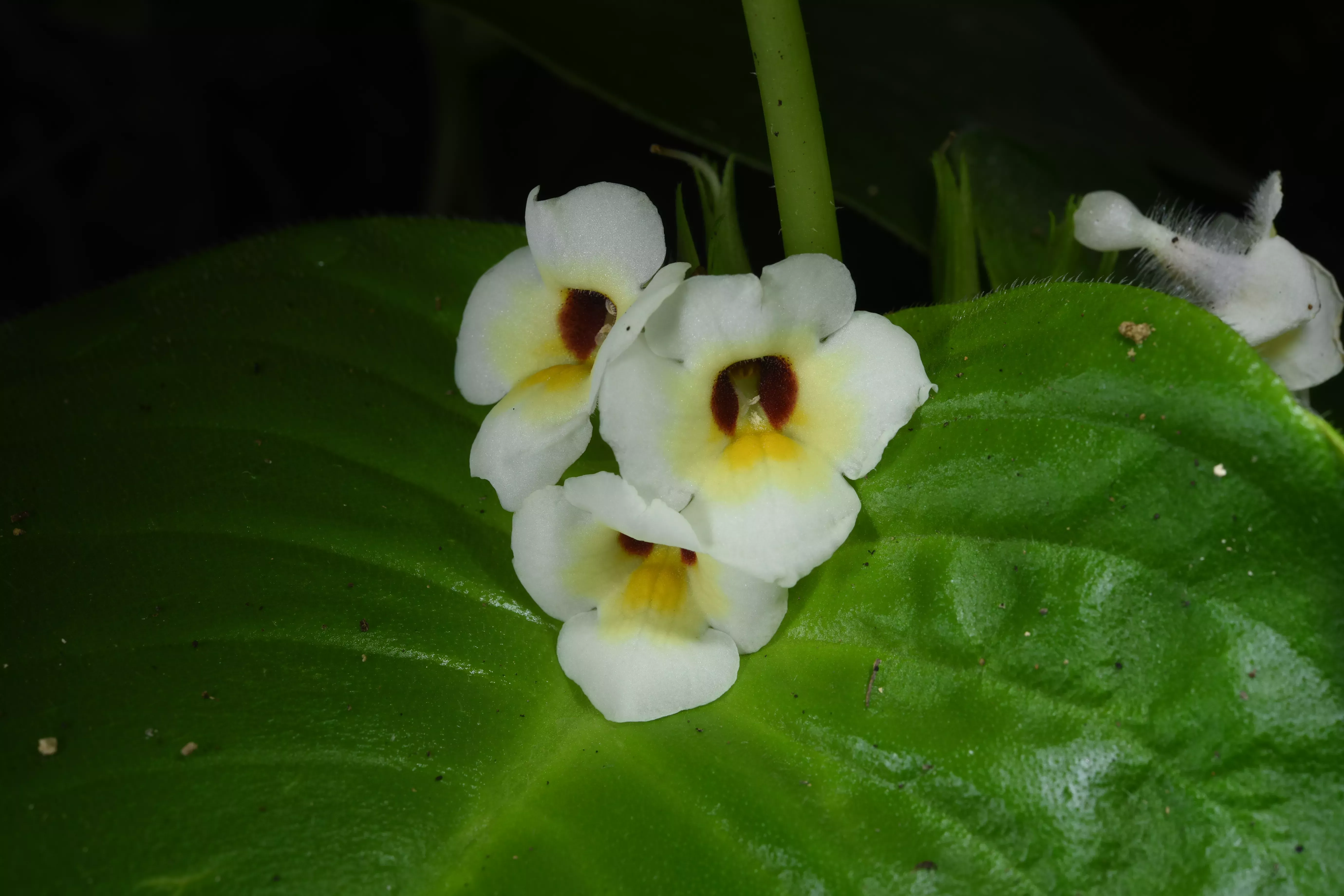
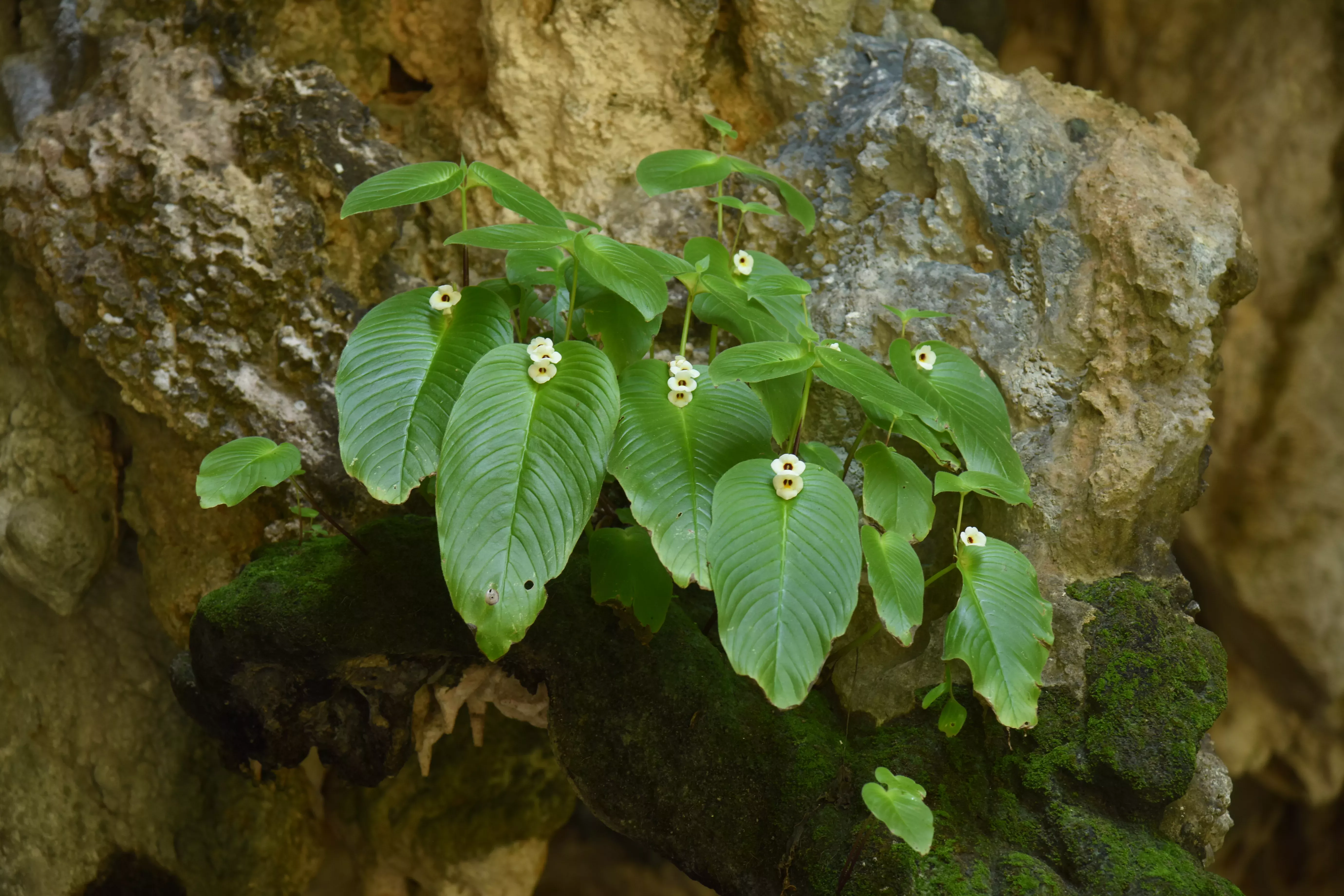
9. Indigo-bearing plant named after pioneering conservationist
To date, scientists have named 750 species of Indigofera (indigo-bearing) plants around the tropics. Several of these species have been independently used to produce blue pigments for clothes, from South America and the Caribbean all the way to Indonesia. Many Indigofera species found in Africa are either highly toxic or very palatable to livestock, but scientists still don’t largely understand which is which.
The plants are mainly shrubs, with T-shaped hairs, especially on the foliage, which is very characteristic of this genus. They also boast cylindrical pods and red or pink flowers. Several species are cultivated as beautiful ornamental shrubs in the UK.
Dr Brian Schrire, a Kew Honorary Research Associate, has been researching this genus for decades, publishing 80 new species, 18 of which are from South Africa and were described with co-authors this year – far exceeding the output of any other RBG Kew taxonomist in 2023. Among the newly described species is Indigofera abbottii, named after Anthony (Tony) Thomas Dixon Abbott, a pioneering conservationist and amateur plant collector who found innumerable plant species including this very namesake. Unfortunately, as is the case for many newly described species, it has been assessed as threatened due to the clearance of its habitat for agriculture and housing development.
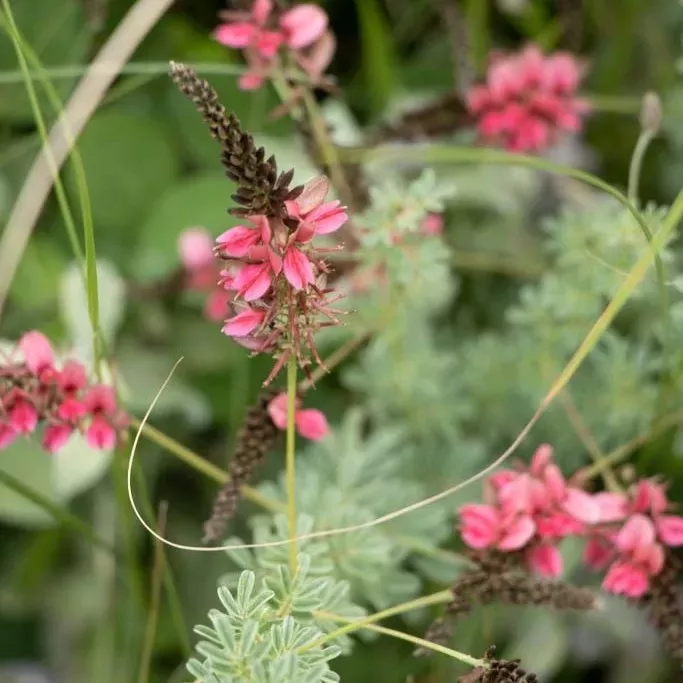
10. To meat or not to meat: Possible carnivorous plant from Mozambique
This mysterious plant was discovered by field botanist Bart Wursten during a botanical exploration in Mozambique. Similar to sundews and covered in insect-trapping glandular hairs, the plant was revealed to be in the genus Crepidorhopalon, a group of flowering plants in the order Lamiales (mints and relatives) that are unrelated to any known carnivorous plant or sundew (Drosera).
Officially named Crepidorhopalon droseroides, which means ‘looks like a Drosera’ due its resemblance to a sundew, it is the 34th known Crepidorhopalon species. No other species in this genus features these sticky, glandular hairs. However, both field and laboratory studies are still needed to confirm whether this new species is carnivorous. While it has been seen to attract and trap insects, it is still uncertain whether it can digest and absorb them for nutrition.
The species’ description was co-authored by RBG Kew’s Dr Iain Darbyshire, a specialist in the order Lamiales in Africa. This is his ninth co-published new species to science for 2023.
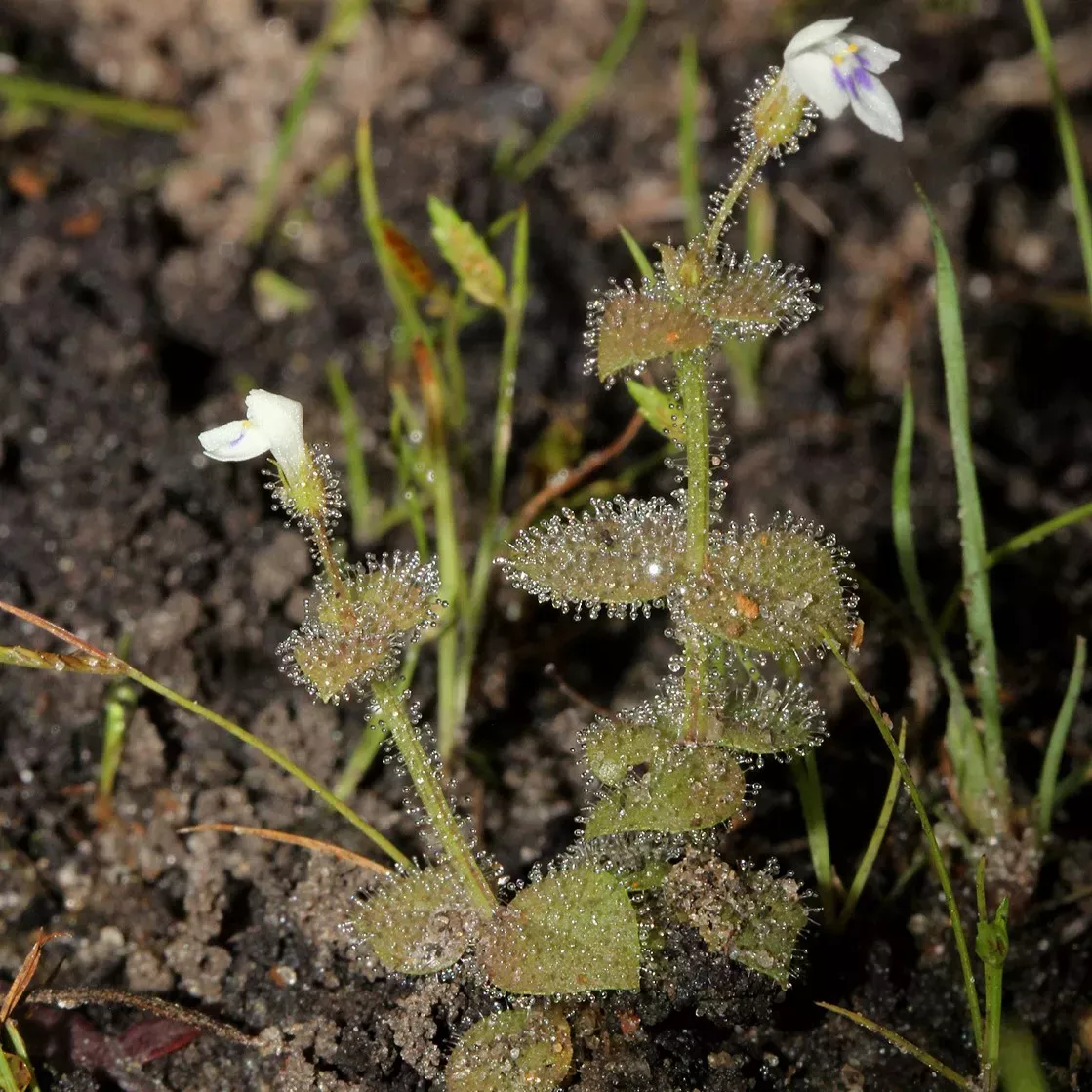
ENDS
For high-res images, please download from the following link and credit as named: https://we.tl/t-jqeLOzG9Wa
For interview requests please contact: Heather McLeod, PR Manager (h.mcleod@kew.org), Sebastian Kettley, Media Officer (s.kettley@kew.org) or pr@kew.org
NOTES TO EDITORS
About Kew Science
Kew Science is the driving force behind RBG Kew’s mission to understand and protect plants and fungi, for the well-being of people and the future of all life on Earth. Over 470 Kew science staff work with partners in more than 100 countries worldwide to halt biodiversity loss, uncover secrets of the natural world, and to conserve and restore the extraordinary diversity of plants and fungi. Kew’s Science Strategy 2021–2025 lays out five scientific priorities to aid these goals: research into the protection of biodiversity through Ecosystem Stewardship, understanding the variety and evolution of traits in plants and fungi through Trait Diversity and Function; digitising and sharing tools to analyse Kew’s scientific collections through Digital Revolution; using new technologies to speed up the naming and characterisation of plants and fungi through Accelerated Taxonomy; and cultivating new scientific and commercial partnerships in the UK and globally through Enhanced Partnerships. One of Kew’s greatest international collaborations is the Millennium Seed Bank Partnership, which has to date stored more than 2.4 billion seeds of over 40,000 wild species of plants across the globe. In 2023, Kew scientists estimated in the State of the World’s Plants and Fungi report that 3 in 4 undescribed plants globally are already likely threatened with extinction.